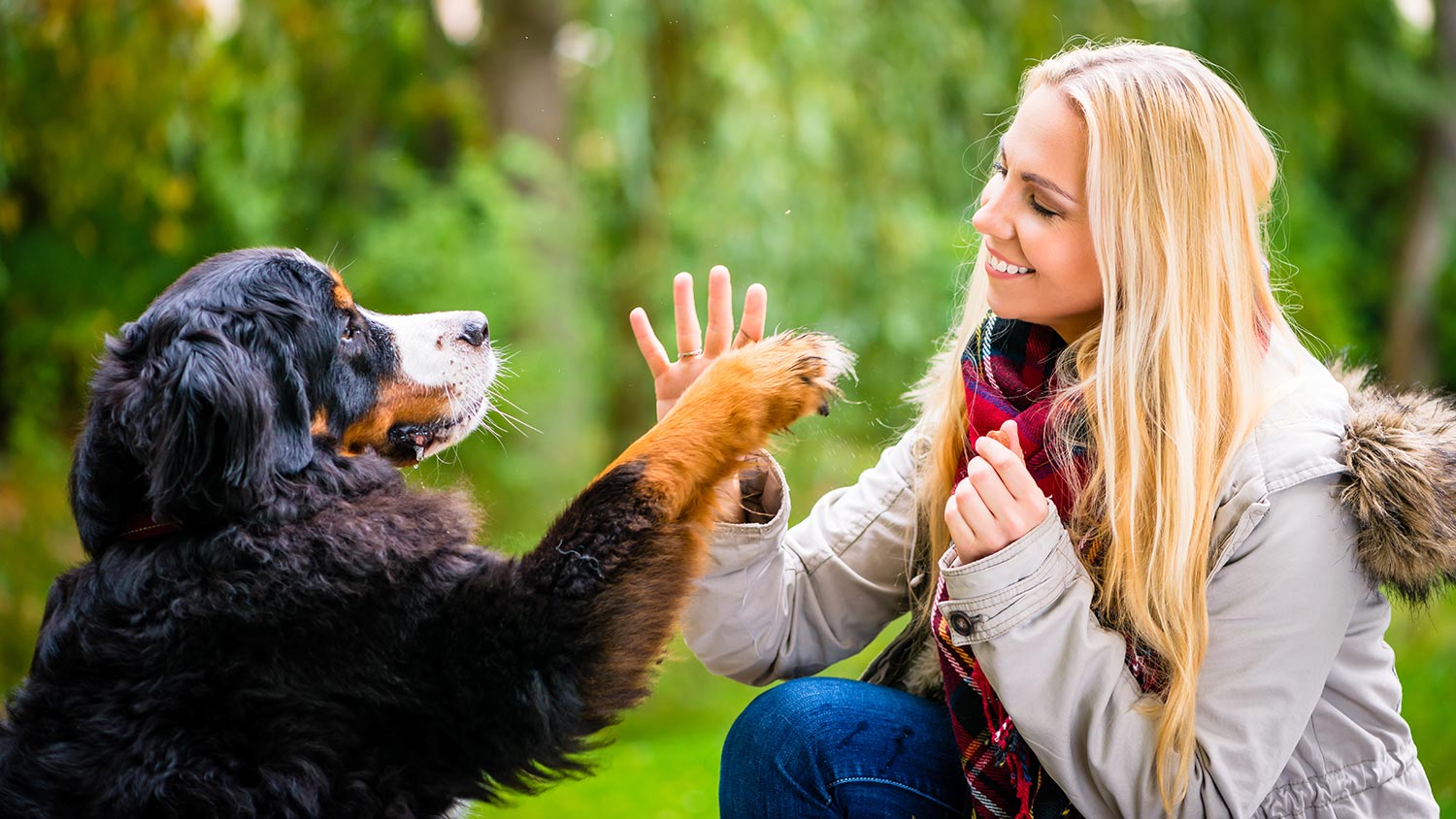Today’s training tips continue your path of learning base fitness skills. This is the fourth in a series of five blogs that Teach Fido the Fundamentals. Grab some treats and your pooch!
Chin Touch (with a hold)
A chin touch means your dog moves the bottom of his muzzle (his chin) to the palm of your upward facing hand and holds it there. At first, chin touch may be shorter than 5 seconds as the dog learns the skill and builds duration.
To start, place your upward facing palm (no treats in that hand) approximately half an inch below your dog’s chin and wait for him to accidentally lower his chin onto your hand. When his chin touches your hand, say “yes” and give him a treat from your other hand. [Alternate method: If your dog does not accidentally lower his chin onto your (right) hand, you could lure him by luring his nose down with a treat in your other (left) hand. Say “yes” when his chin makes contact with your (right) hand and treat him from your (left) hand.] After a couple of repetitions of doing this correctly, add the command word “chin” before the dog moves his chin onto your hand.
After the dog understands to rest his chin on your palm, start delaying the marker word (“yes”) for a second or two to teach the dog duration. The goal is 5-10 seconds! As your dog masters his understanding of this skill, perform the skill with your palm at various angles – below your dog’s chin level, slightly higher than his nose, to the right and to the left.
This skill can be used for weight shifting (as discussed with the nose touch with duration in the third of the Teach Fido the Fundamentals blogs) and to encourage him to move his body by following the chin hold. It’s also a great way to get your dog to hold his head still for veterinary examinations or ear cleanings!
Shake with All Four Paws
Yes, dogs can shake with their back paws, too! Teaching your dog to lift all four paws individually and on-command will sky-rocket some of the fitness skills and combinations you can do on and off equipment. The easiest naming convention to remember is numbers. Use “1” and “2” for the front paws and “3” and “4” for the back paws (dog’s right and left, respectively). Invest some time in teaching your dog how to shake using this shake blog.
Right and Left Circles
For left and right circles, you’ll train your dog to spin in a full 360-degree circle in each direction on command. The easiest command words to use are “right” and “left.” Your dog will take small steps in a tight, controlled circle as if he were chasing his tail, but in slower motion. All four paws will remain mostly on the ground – do not encourage leaping or twirling in the air, as that could twerk your dog’s spine and will not teach your dog the controlled, safe and thoughtful movement. Your dog should remain standing and shouldn’t sit mid-way through the circle. See this blog for more instructions.
Right and left circles are great ways to warm up your dog and to cool down your dog. In the future blogs, you will use circling in combinations of fitness skills, too!
Crawling
Imagine your dog army crawling – this means your dog keeps his belly on the ground while he moves all four legs to scooch forward continuously. The easiest way to teach that is to have your dog crawl under something. Set up a “tunnel” made of two dining room chairs on each side covered by either sofa cushions, pillows or poles (broom handles, mops, pool noodles or golf clubs) on top. Start with a short “tunnel” that is only a foot long. Have your dog start on one side of the tunnel and encourage him to duck under to meet you on the other side for a treat!
Over time, make the tunnel longer and begin using a command word, such as “be sneaky” or “crawl.” Eventually, fade the tunnel so the dog crawls on command without the tunnel!
Now it’s time to start your training session. Enjoy!
,

